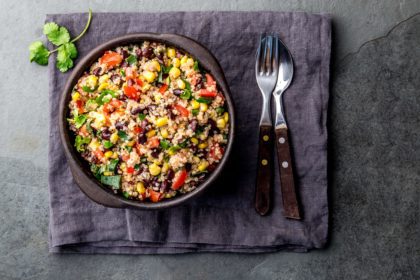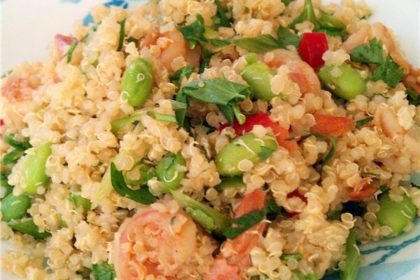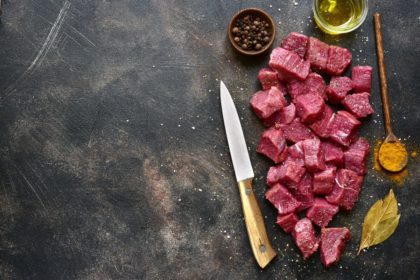 The frozen food industry has evolved as a greater number of consumers want and need more nutritionally sound foods. Frozen meals are handy and can rescue many busy parents with ravenous kids or seniors who are alone and can’t get to the grocery store often. You can stock up on healthy meals and get a nutritious entree from the freezer to the table in the time it takes to prepare a side dish. By supplementing with a fresh salad or soup, you can serve a well-rounded meal in minutes — a big change from the original classic TV dinner.
The frozen food industry has evolved as a greater number of consumers want and need more nutritionally sound foods. Frozen meals are handy and can rescue many busy parents with ravenous kids or seniors who are alone and can’t get to the grocery store often. You can stock up on healthy meals and get a nutritious entree from the freezer to the table in the time it takes to prepare a side dish. By supplementing with a fresh salad or soup, you can serve a well-rounded meal in minutes — a big change from the original classic TV dinner.
 Gluten-Free: Gluten is a protein found in wheat, barley, rye, malts, and triticale. A gluten-free diet excludes foods containing gluten and may exclude oats as well. People on gluten-free diets want the same convenience of frozen food. There are now a variety of gluten-free frozen pizzas and meals available, such as Italian pastas, bowls, and Thai, Mexican and Indian dishes. Be sure to check the label to ensure that the food is prepared in a gluten-free facility.
Gluten-Free: Gluten is a protein found in wheat, barley, rye, malts, and triticale. A gluten-free diet excludes foods containing gluten and may exclude oats as well. People on gluten-free diets want the same convenience of frozen food. There are now a variety of gluten-free frozen pizzas and meals available, such as Italian pastas, bowls, and Thai, Mexican and Indian dishes. Be sure to check the label to ensure that the food is prepared in a gluten-free facility.
Natural: Frozen meals have been notorious for being high in fat, salt and preservatives and low in fiber and nutrients/antioxidants. But when the food trend started to focus on heart healthy, natural and organic, the frozen food industry recognized a need. Some of the manufacturers of such foods are family businesses that set out to earn a living by sharing their passion for good, “from scratch” food.
 Breakfast Foods: There was a time when frozen breakfast foods used to be limited to frozen fiber-less waffles made from white flour. Now you can find flax and buckwheat waffles, egg white spinach and mushroom omelettes, veggie ‘sausages’, and even tofu breakfast wraps.
Breakfast Foods: There was a time when frozen breakfast foods used to be limited to frozen fiber-less waffles made from white flour. Now you can find flax and buckwheat waffles, egg white spinach and mushroom omelettes, veggie ‘sausages’, and even tofu breakfast wraps.
Fruit: Fruits are rich in vitamins, minerals and antioxidants, but they’re seasonal (and often extremely perishable) and can be very expensive when out of season. There is now a wide array of frozen fruits available from berries to cherries as well as peaches, pineapples and mangoes. You can enjoy your favorite fruits in a smoothie all year around or as a handy refreshing nutritious snack.
 Light and Lean: Eating fast (frozen) food that’s good for your waistline is also now easier to find. Amy’s Kitchen, Inc. has created their own two-week diet plans (1500-calorie and 1800-calorie options) that include eating Amy’s meals 2-3 times a day plus lots of fruits and veggies.
Light and Lean: Eating fast (frozen) food that’s good for your waistline is also now easier to find. Amy’s Kitchen, Inc. has created their own two-week diet plans (1500-calorie and 1800-calorie options) that include eating Amy’s meals 2-3 times a day plus lots of fruits and veggies.
Frozen food is convenient and no longer something the busy, health-conscious shopper has to be embarrassed to buy and feel compelled to hide at the bottom of his/her grocery cart. Healthy, whole food is available now for most everyone — whether you’re on a special diet (i.e., vegan, low fat, gluten free, lactose intolerant) or you’re ‘cooking impaired’. 🙂
Options for the Frozen Foodie





